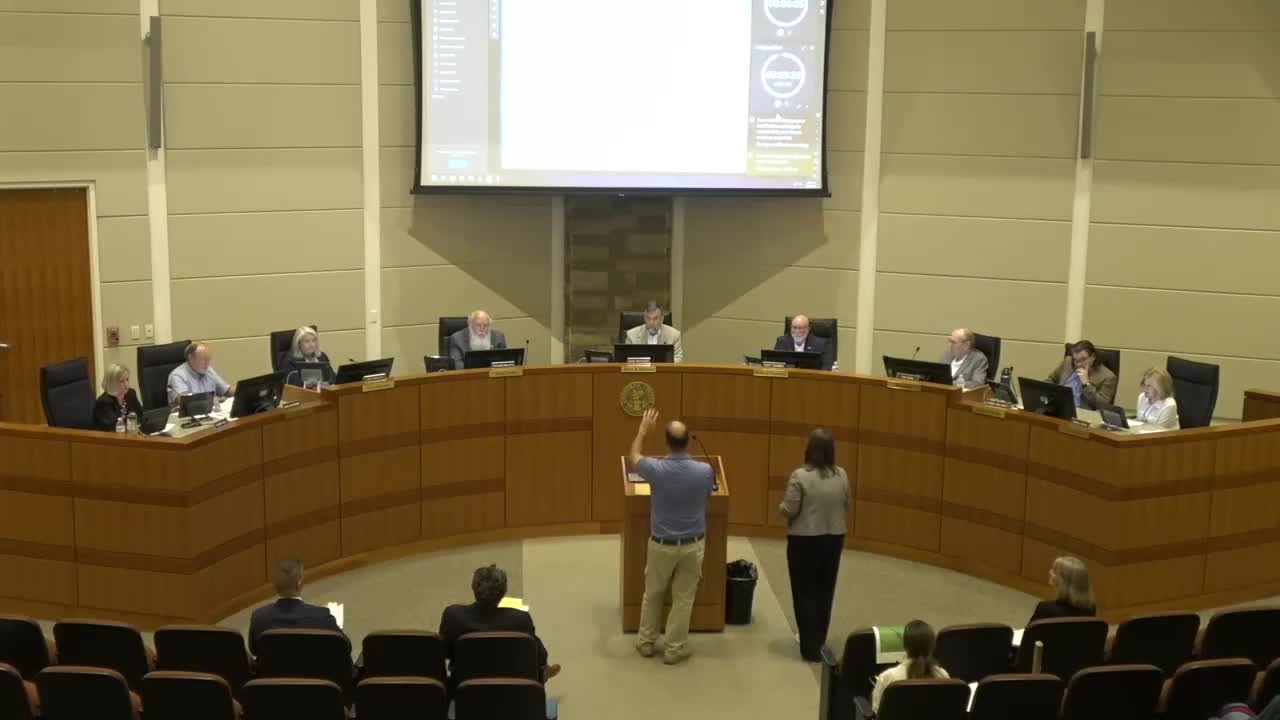Ball Ground City Council Approves Commercial Development for Independent Hardware Store
September 02, 2025 | Cherokee County, Georgia
This article was created by AI summarizing key points discussed. AI makes mistakes, so for full details and context, please refer to the video of the full meeting. Please report any errors so we can fix them. Report an error »

In a recent public hearing held by the Cherokee Planning Commission, community members voiced their concerns over a proposed commercial development in Cherokee County, Georgia. The meeting, which took place on September 2, 2025, highlighted the tension between economic growth and environmental preservation.
As residents gathered, one local school bus driver passionately expressed his worries about the impact of ongoing development on local wildlife. "If we keep cutting down all these trees in Cherokee County, these animals have nowhere to go," he lamented, referencing the increasing number of dead animals he encounters on his daily routes. His plea resonated with many in attendance, who fear that the construction of new homes and businesses could disrupt the natural habitat of deer, bears, and other wildlife.
The proposed development, which includes an independent hardware store, has sparked debate among community members and city officials alike. While some residents fear that the project could lead to further commercial encroachment, city representatives argued that the location is suitable for such development, given its proximity to existing industrial and commercial areas. "This is on a state route where you anticipate commercial development," one official noted, emphasizing the need for businesses to serve the surrounding community.
Concerns about the potential future of the site were also raised. A resident questioned what would happen if the hardware store were to fail, suggesting that it could pave the way for less desirable businesses. This sentiment was echoed by others who worry about the long-term implications of changing the area’s zoning from residential to commercial.
As discussions progressed, the need for adequate buffering between the new development and neighboring properties became a focal point. City officials acknowledged the importance of maintaining a buffer zone to protect the interests of nearby residents. "We will need 35 feet all the way around here," one commissioner stated, highlighting the recommendations from staff to ensure a proper transition between the commercial site and residential areas.
Ultimately, the commission moved towards a decision, with a motion to approve the development contingent upon the establishment of appropriate buffers. The outcome of this meeting reflects a broader conversation in Cherokee County about balancing growth with environmental stewardship, a challenge that will likely continue to shape the community's future. As the meeting concluded, the air was thick with anticipation—what will this new development mean for the residents, the wildlife, and the character of Cherokee County? Only time will tell.
As residents gathered, one local school bus driver passionately expressed his worries about the impact of ongoing development on local wildlife. "If we keep cutting down all these trees in Cherokee County, these animals have nowhere to go," he lamented, referencing the increasing number of dead animals he encounters on his daily routes. His plea resonated with many in attendance, who fear that the construction of new homes and businesses could disrupt the natural habitat of deer, bears, and other wildlife.
The proposed development, which includes an independent hardware store, has sparked debate among community members and city officials alike. While some residents fear that the project could lead to further commercial encroachment, city representatives argued that the location is suitable for such development, given its proximity to existing industrial and commercial areas. "This is on a state route where you anticipate commercial development," one official noted, emphasizing the need for businesses to serve the surrounding community.
Concerns about the potential future of the site were also raised. A resident questioned what would happen if the hardware store were to fail, suggesting that it could pave the way for less desirable businesses. This sentiment was echoed by others who worry about the long-term implications of changing the area’s zoning from residential to commercial.
As discussions progressed, the need for adequate buffering between the new development and neighboring properties became a focal point. City officials acknowledged the importance of maintaining a buffer zone to protect the interests of nearby residents. "We will need 35 feet all the way around here," one commissioner stated, highlighting the recommendations from staff to ensure a proper transition between the commercial site and residential areas.
Ultimately, the commission moved towards a decision, with a motion to approve the development contingent upon the establishment of appropriate buffers. The outcome of this meeting reflects a broader conversation in Cherokee County about balancing growth with environmental stewardship, a challenge that will likely continue to shape the community's future. As the meeting concluded, the air was thick with anticipation—what will this new development mean for the residents, the wildlife, and the character of Cherokee County? Only time will tell.
View full meeting
This article is based on a recent meeting—watch the full video and explore the complete transcript for deeper insights into the discussion.
View full meeting
